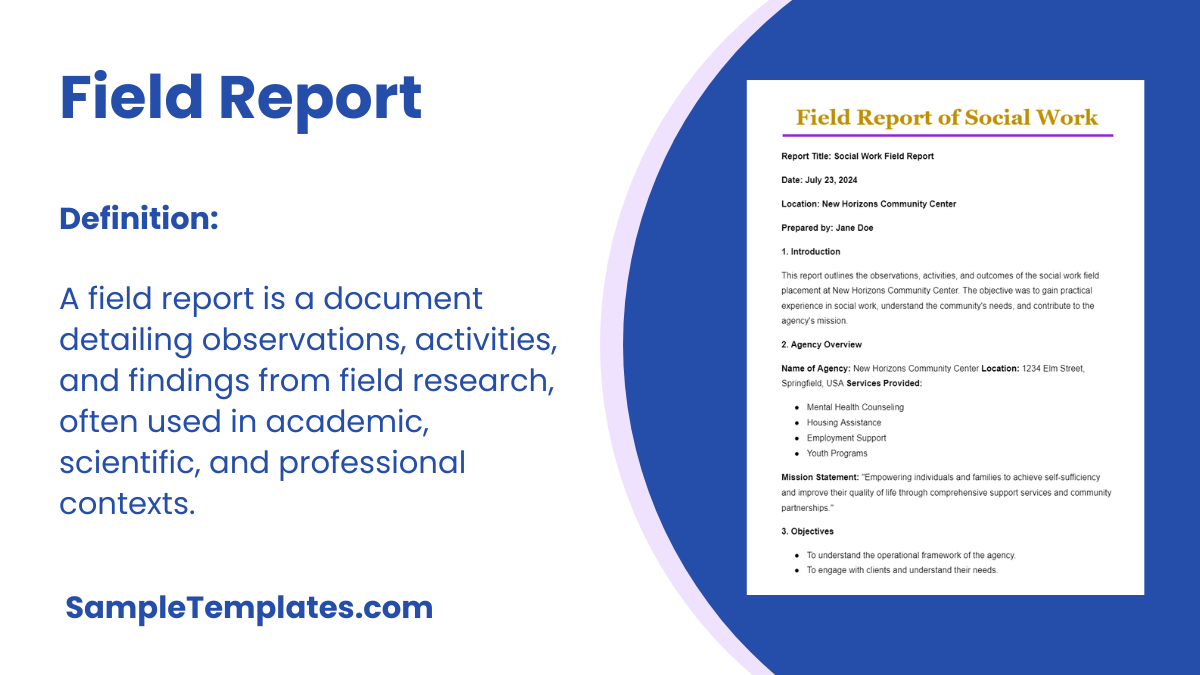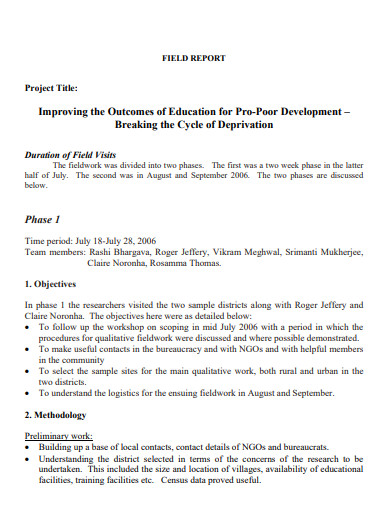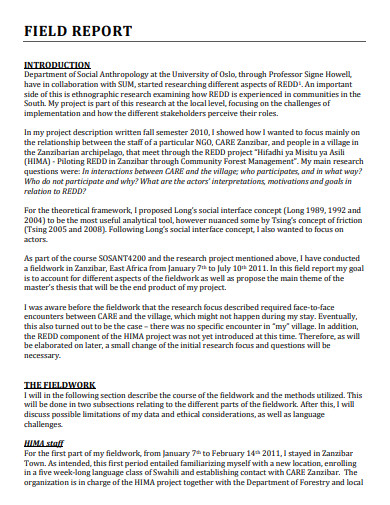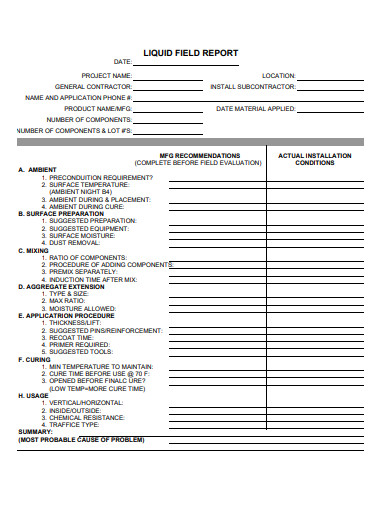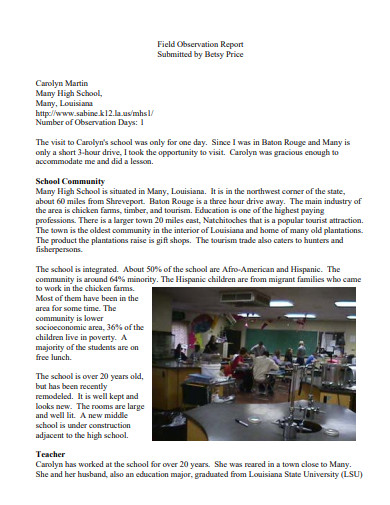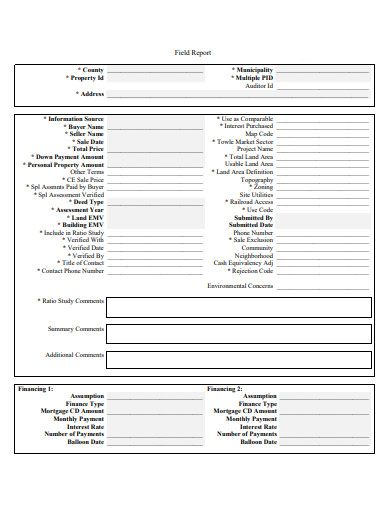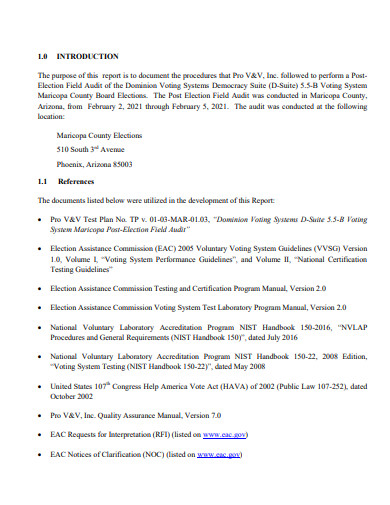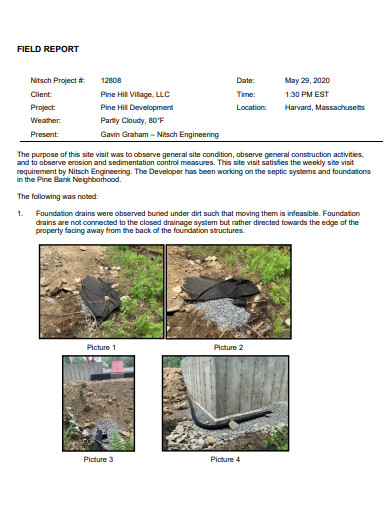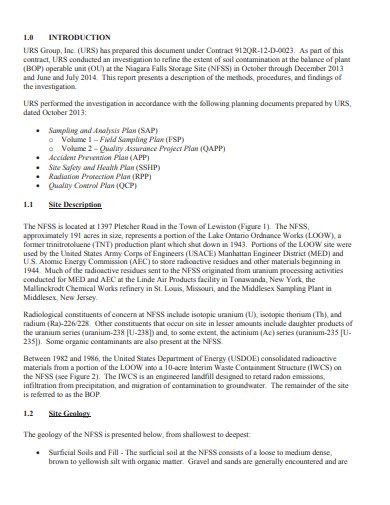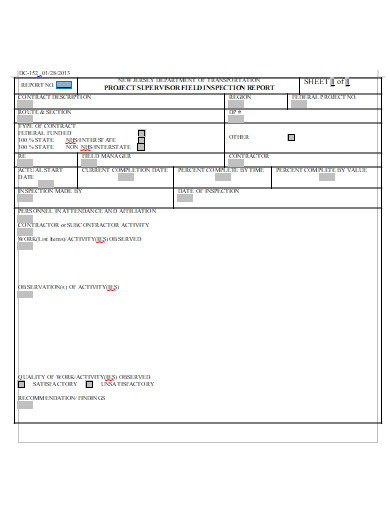If you have a class in social sciences, sometimes instructors will propose a field report sample to improve your knowledge of important theoretical topics by attentive and systematic observation of and comment on real-world experience. Field reports can provide a chance to gather evidence by watching professional activity in ways that question or refine established hypotheses. We are all witnesses of people, their relationships, locations, and events; but, while producing a field report, your role is to develop a research study plan based on data analysis obtained by observation, a synthesis of significant results, and an interpretation of their significance. Sounds intimidating and need some help with writing your field report? We’ll look no further, because we’ve got you covered! In this article, we provide you with free and ready-made samples of Field Reports in PDF and DOC format that you could use for your benefit. Keep on reading to find out more!
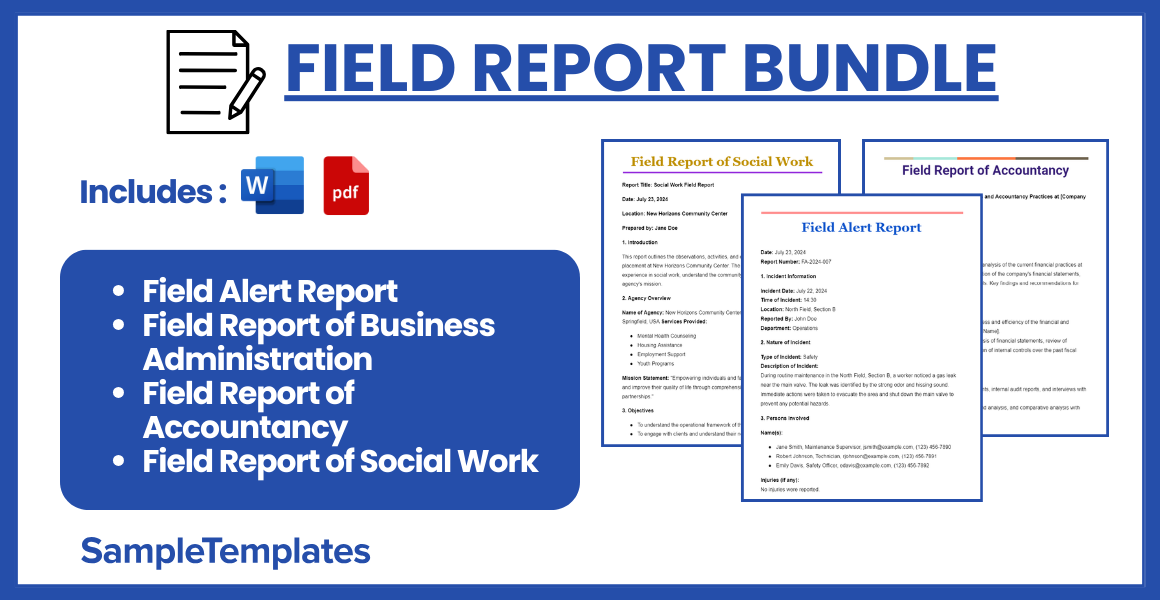
Field Alert Report
Date: July 23, 2024
Report Number: FA-2024-007
1. Incident Information
Incident Date: July 22, 2024
Time of Incident: 14:30
Location: North Field, Section B
Reported By: John Doe
Department: Operations
2. Nature of Incident
Type of Incident: Safety
Description of Incident:
During routine maintenance in the North Field, Section B, a worker noticed a gas leak near the main valve. The leak was identified by the strong odor and hissing sound. Immediate actions were taken to evacuate the area and shut down the main valve to prevent any potential hazards.
3. Persons Involved
Name(s):
- Jane Smith, Maintenance Supervisor, [email protected], (123) 456-7890
- Robert Johnson, Technician, [email protected], (123) 456-7891
- Emily Davis, Safety Officer, [email protected], (123) 456-7892
Injuries (if any):
No injuries were reported.
4. Immediate Response Actions
Action Taken:
The area was immediately evacuated, and the main valve was shut down to stop the gas leak. The Safety Officer was notified, and the incident was reported to the Operations Manager.
Responsible Personnel:
Emily Davis, Safety Officer
5. Follow-Up Actions
Further Actions Required:
- Conduct a thorough inspection of the valve and surrounding pipeline.
- Implement additional safety checks for similar valves in the field.
- Review and update emergency response procedures.
Assigned To:
- Robert Johnson, Technician
- Jane Smith, Maintenance Supervisor
Due Date:
July 30, 2024
6. Investigation
Lead Investigator: Emily Davis, Safety Officer
Investigation Start Date: July 23, 2024
Estimated Completion Date: July 28, 2024
Summary of Investigation:
Initial findings suggest that the leak may have been caused by wear and tear on the valve. Further investigation is required to confirm the root cause and recommend preventive measures.
7. Recommendations and Preventive Measures
Recommendations:
- Replace the faulty valve and inspect similar valves in the vicinity.
- Enhance routine maintenance protocols to include more frequent checks of high-risk areas.
Preventive Measures:
- Implement regular training sessions for staff on identifying and responding to gas leaks.
- Increase the frequency of equipment inspections in high-risk areas.
8. Approval
Prepared By:
John Doe, Operations Manager, [Signature], July 23, 2024
Reviewed By:
Jane Smith, Maintenance Supervisor, [Signature], July 23, 2024
Approved By:
Michael Brown, Chief Operations Officer, [Signature], July 23, 2024
Attachments:
- Photographs of the incident site
- Witness statements from involved personnel
- Maintenance records for the affected valve
Note: This report is confidential and intended for internal use only. Unauthorized disclosure or distribution is prohibited
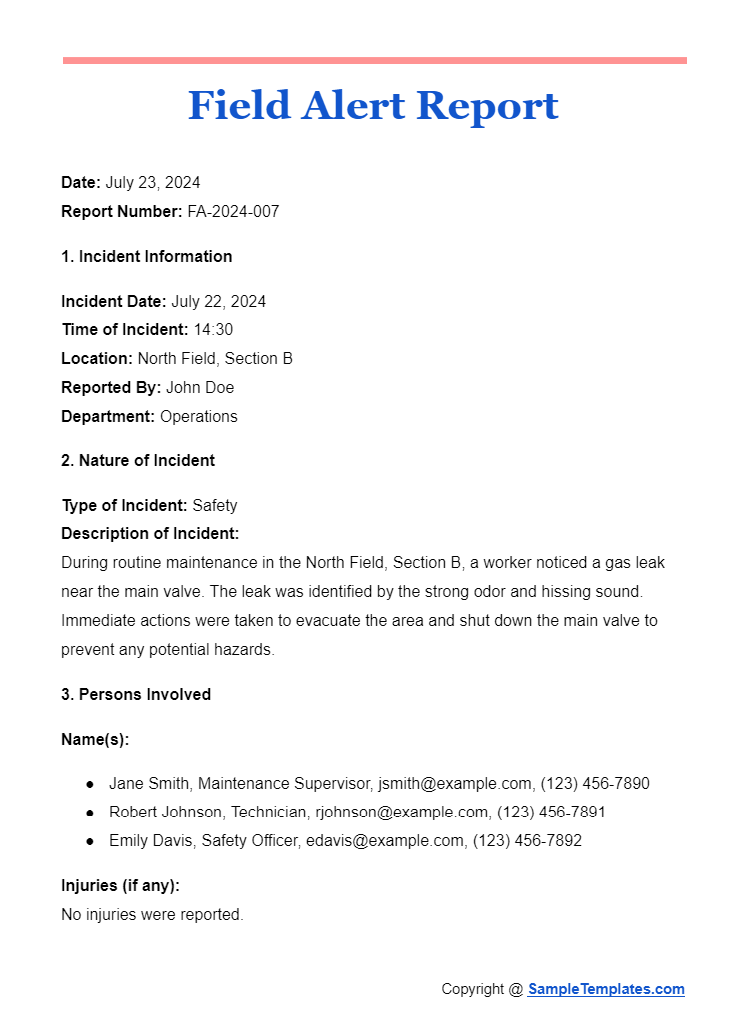
Field Report of Business Administration
Date: July 23, 2024
Prepared by: [Your Name]
Executive Summary
This field report details the observations and findings from a recent visit to several business administration departments within a variety of organizations. The purpose of these visits was to analyze administrative processes, evaluate organizational structures, and identify best practices in business administration.
Objectives
- To assess the efficiency of administrative processes.
- To evaluate the effectiveness of organizational structures.
- To identify best practices in business administration.
Methodology
The field report is based on visits to three organizations of varying sizes and industries:
- Organization A: A large multinational corporation.
- Organization B: A mid-sized regional company.
- Organization C: A small local business.
Data was collected through direct observation, interviews with key personnel, and review of organizational documents.
Findings
Organization A: Large Multinational Corporation
- Administrative Processes: Highly structured with clear protocols. Use of advanced software for workflow management.
- Organizational Structure: Hierarchical with distinct departments. Emphasis on specialization.
- Best Practices:
- Implementation of ERP (Enterprise Resource Planning) systems.
- Regular training programs for employees.
- Strong internal communication channels.
Organization B: Mid-sized Regional Company
- Administrative Processes: Moderately structured with some flexibility. Combination of manual and digital processes.
- Organizational Structure: Semi-hierarchical with cross-functional teams.
- Best Practices:
- Use of project management tools for cross-departmental projects.
- Employee empowerment and involvement in decision-making.
- Effective use of performance metrics.
Organization C: Small Local Business
- Administrative Processes: Informal and flexible. Reliance on manual processes.
- Organizational Structure: Flat structure with a small team.
- Best Practices:
- Close-knit team leading to strong collaboration.
- Quick decision-making process.
- Personalized customer service.
Analysis
- Efficiency of Administrative Processes: Organization A demonstrated the highest efficiency due to its structured processes and use of technology. Organization B showed moderate efficiency with a balance between structure and flexibility. Organization C, while flexible, lacked the efficiency seen in larger organizations due to manual processes.
- Effectiveness of Organizational Structures: Hierarchical structures in Organization A facilitated specialization but could lead to slower decision-making. Organization B’s semi-hierarchical structure promoted collaboration and efficiency. Organization C’s flat structure enabled quick decisions but could hinder growth and scalability.
- Best Practices: Technology adoption (ERP systems, project management tools) and employee involvement were common best practices. Regular training and effective communication were also crucial for organizational success.
Recommendations
- For Large Organizations: Continue leveraging advanced technologies and enhance inter-departmental communication.
- For Mid-sized Companies: Foster a balance between structured processes and flexibility to maintain efficiency.
- For Small Businesses: Gradually integrate digital tools to improve process efficiency while maintaining flexibility.
Conclusion
The field visit provided valuable insights into the administrative processes and organizational structures of different-sized businesses. The identified best practices can serve as benchmarks for improving business administration across various organizations.
Attachments:
- Interview transcripts
- Organizational charts
- Process flow diagrams
Report Prepared by:
[Your Name]
[Your Position]
[Contact Information]
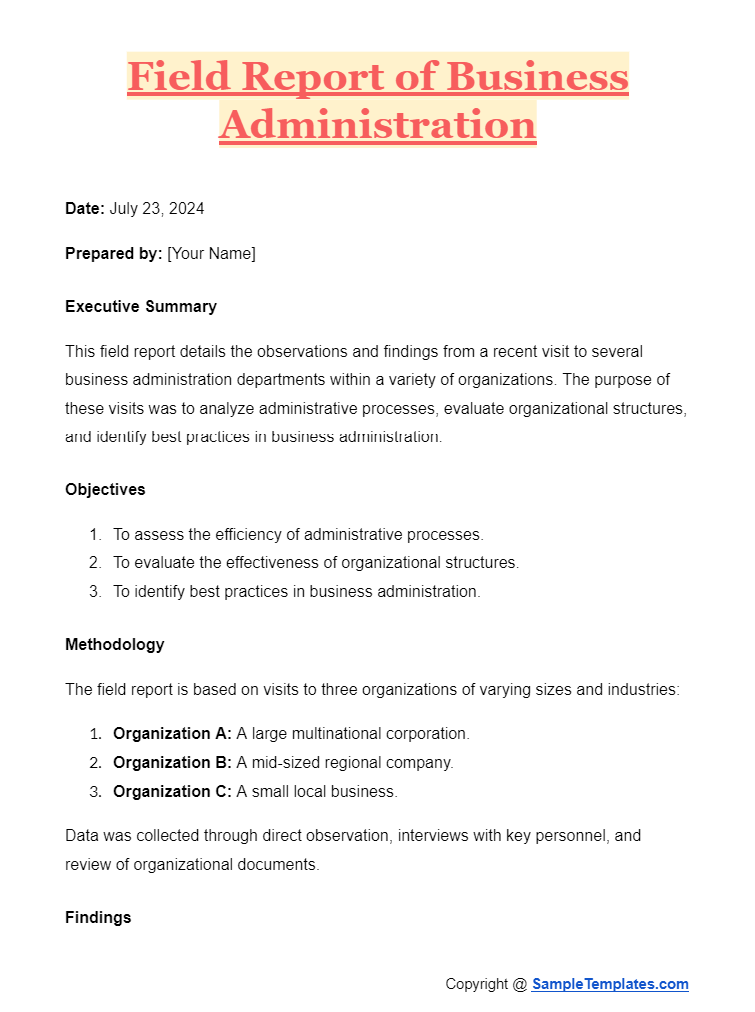
Field Report of Accountancy
Title: Field Report on Financial Analysis and Accountancy Practices at [Company Name]
Date: [Insert Date]
Prepared by: [Your Name]
1. Executive Summary
The purpose of this report is to provide an analysis of the current financial practices at [Company Name]. This includes an evaluation of the company’s financial statements, accounting procedures, and internal controls. Key findings and recommendations for improvement are also presented.
2. Introduction
- Objective: To assess the effectiveness and efficiency of the financial and accounting operations at [Company Name].
- Scope: This report covers the analysis of financial statements, review of accounting processes, and evaluation of internal controls over the past fiscal year.
3. Methodology
- Data Collection: Financial statements, internal audit reports, and interviews with key personnel.
- Analysis Tools: Ratio analysis, trend analysis, and comparative analysis with industry standards.
- Evaluation Criteria: Accuracy, compliance with accounting standards, and effectiveness of internal controls.
4. Financial Analysis
- Income Statement: Analysis of revenue, expenses, and net income.
- Key Metrics: Gross profit margin, operating margin, net profit margin.
- Observations: [Provide detailed analysis]
- Balance Sheet: Assessment of assets, liabilities, and equity.
- Key Metrics: Current ratio, quick ratio, debt-to-equity ratio.
- Observations: [Provide detailed analysis]
- Cash Flow Statement: Evaluation of cash inflows and outflows.
- Key Metrics: Operating cash flow, investing cash flow, financing cash flow.
- Observations: [Provide detailed analysis]
5. Review of Accounting Processes
- General Ledger Maintenance: Review of journal entries and ledger postings.
- Observations: [Provide detailed observations]
- Accounts Receivable and Payable: Evaluation of billing and payment processes.
- Observations: [Provide detailed observations]
- Inventory Management: Analysis of inventory tracking and valuation methods.
- Observations: [Provide detailed observations]
6. Internal Controls Evaluation
- Control Environment: Assessment of the overall control environment and company culture.
- Observations: [Provide detailed observations]
- Risk Assessment: Evaluation of the company’s risk assessment processes.
- Observations: [Provide detailed observations]
- Control Activities: Review of policies and procedures in place to mitigate risks.
- Observations: [Provide detailed observations]
- Information and Communication: Assessment of the effectiveness of information flow and communication channels.
- Observations: [Provide detailed observations]
- Monitoring Activities: Evaluation of the processes for monitoring controls and addressing deficiencies.
- Observations: [Provide detailed observations]
7. Key Findings
- Strengths: [Highlight the strengths identified during the analysis]
- Weaknesses: [Highlight the weaknesses identified during the analysis]
- Opportunities: [Identify opportunities for improvement]
- Threats: [Identify potential threats to the financial health and stability]
8. Recommendations
- Short-term Recommendations: [List actionable short-term recommendations]
- Long-term Recommendations: [List strategic long-term recommendations]
- Implementation Plan: [Provide a suggested plan for implementing recommendations]
9. Conclusion
Summarize the overall findings and reiterate the importance of addressing the identified issues to enhance financial performance and compliance.
10. Appendices
- Appendix A: Detailed financial statements
- Appendix B: Interview summaries
- Appendix C: Additional charts and graphs
Prepared by:
[Your Name]
[Your Position]
[Contact Information]
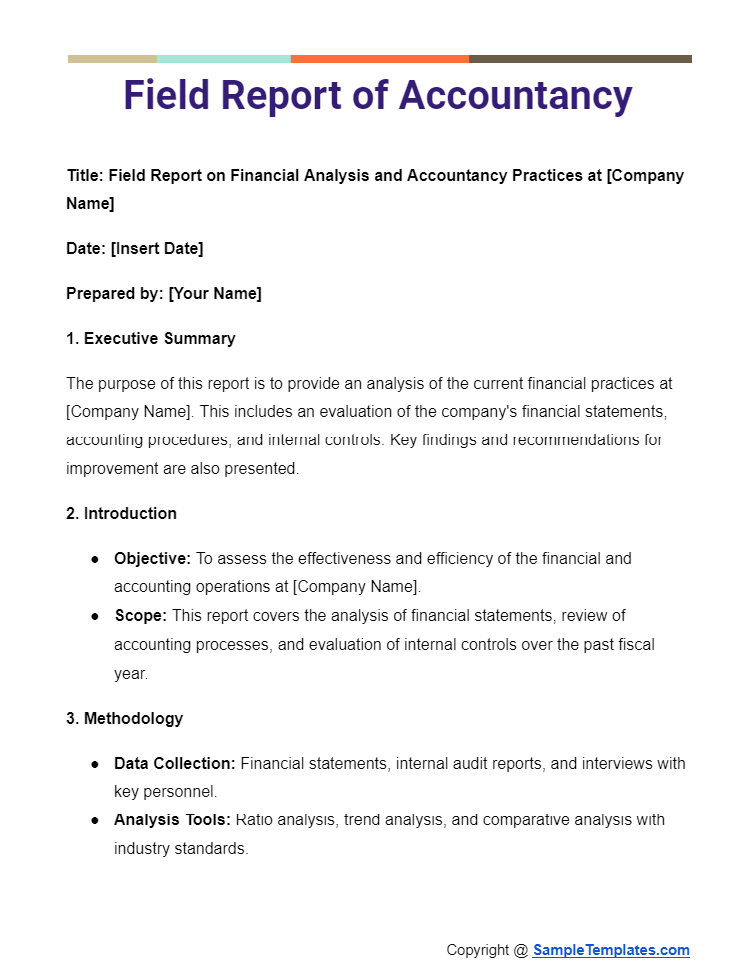
Field Report of Social Work
Report Title: Social Work Field Report
Date: July 23, 2024
Location: New Horizons Community Center
Prepared by: Jane Doe
1. Introduction
This report outlines the observations, activities, and outcomes of the social work field placement at New Horizons Community Center. The objective was to gain practical experience in social work, understand the community’s needs, and contribute to the agency’s mission.
2. Agency Overview
Name of Agency: New Horizons Community Center Location: 1234 Elm Street, Springfield, USA Services Provided:
- Mental Health Counseling
- Housing Assistance
- Employment Support
- Youth Programs
Mission Statement: “Empowering individuals and families to achieve self-sufficiency and improve their quality of life through comprehensive support services and community partnerships.”
3. Objectives
- To understand the operational framework of the agency.
- To engage with clients and understand their needs.
- To apply theoretical knowledge in practical settings.
- To develop skills in case management, assessment, and intervention.
4. Activities Undertaken
Week 1: Orientation
- Introduction to staff and agency policies.
- Overview of services provided by the agency.
- Tour of the facility.
Week 2-4: Client Interaction
- Assisted in intake interviews and assessments.
- Participated in case management meetings.
- Conducted home visits to assess living conditions and provide support.
Week 5-8: Program Implementation
- Developed and facilitated support group sessions.
- Created educational materials for clients.
- Assisted in organizing community outreach programs.
Week 9-12: Evaluation and Reporting
- Monitored client progress and documented case notes.
- Evaluated the effectiveness of interventions.
- Prepared reports on client outcomes and program efficacy.
5. Observations
- Client Needs: High demand for mental health services, housing assistance, and employment support.
- Agency Strengths: Strong community presence, dedicated staff, comprehensive range of services.
- Areas for Improvement: Need for more funding, better facilities, and additional staff training.
6. Challenges Faced
- Limited resources and high caseloads.
- Communication barriers with clients from diverse backgrounds.
- Balancing administrative duties with direct client interaction.
7. Skills Developed
- Enhanced communication and interpersonal skills.
- Improved ability to conduct assessments and develop intervention plans.
- Gained experience in advocacy and community organizing.
8. Client Outcomes
- Successful placement of 10 clients in housing programs.
- 70% improvement in clients’ mental health as reported in follow-up assessments.
- Increased engagement in community programs.
9. Recommendations
- Increase funding to expand services and improve facilities.
- Implement ongoing staff training programs.
- Enhance outreach efforts to underserved communities.
10. Conclusion
The field placement at New Horizons Community Center provided valuable insights into the practical aspects of social work. The experience highlighted the importance of a holistic approach in addressing client needs and reinforced the necessity of advocacy for systemic changes. Continued collaboration between agencies and community stakeholders is essential for the sustained well-being of clients.
Submitted by:
Jane Doe
[email protected]
Springfield University

Browse More Templates On Field Report
1. Field Report Sample PDF
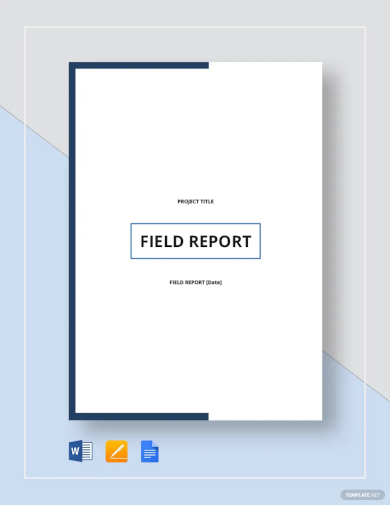
2. Construction Field Report
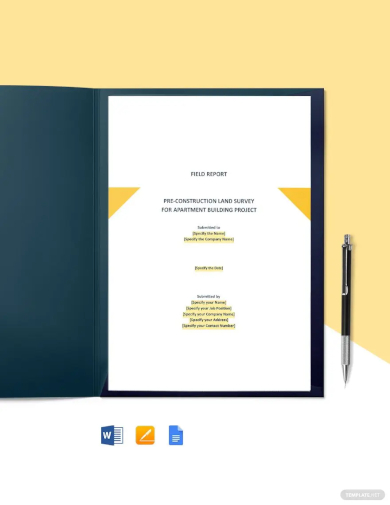
3. Field Report Sample
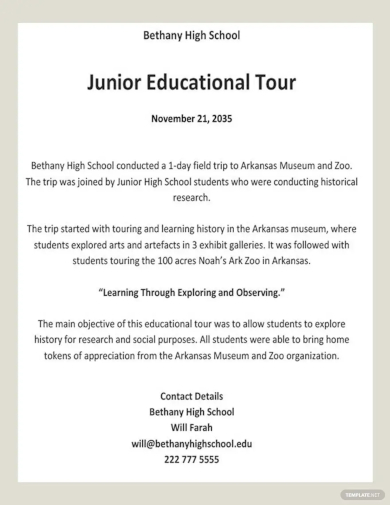
4. Field Report Sample Doc
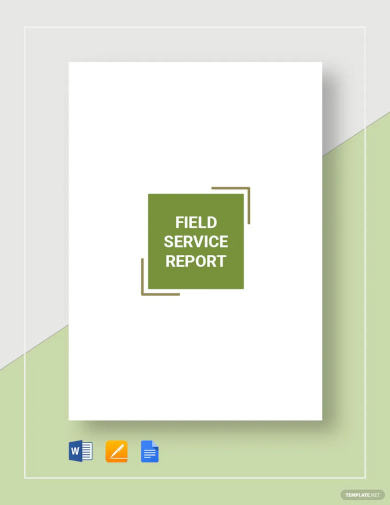
How to Make a Field Report?
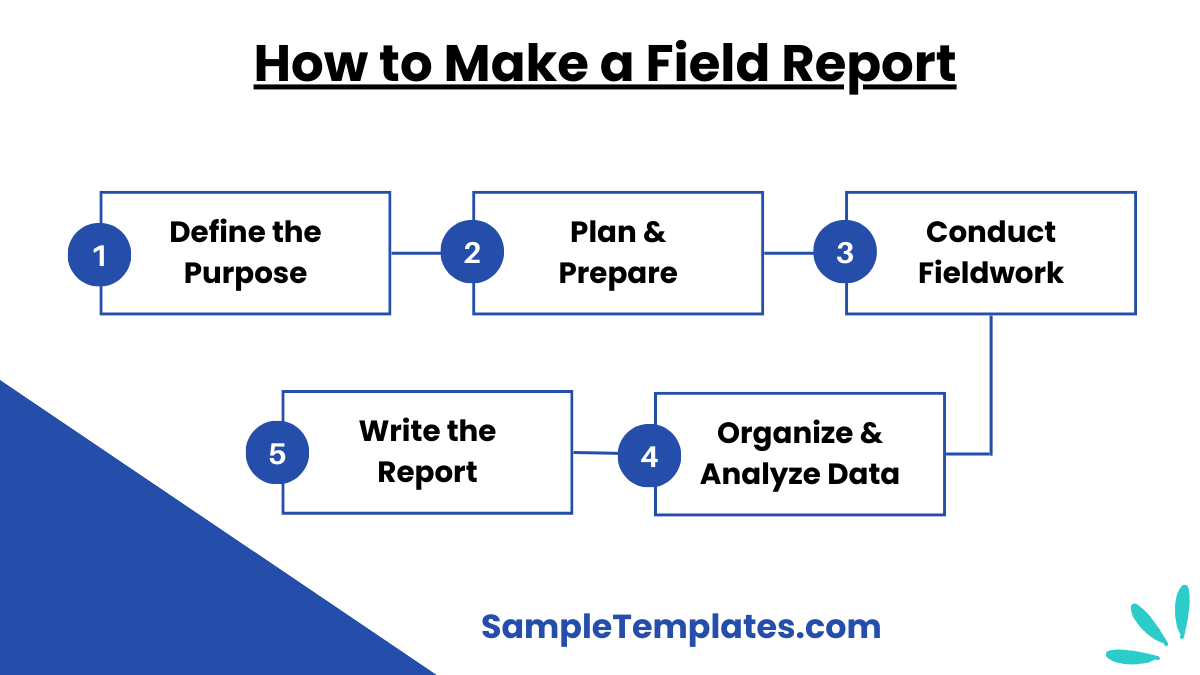
- Define the Purpose:
- Clearly state the objective of the field study and what you aim to observe or investigate. This sets the focus for your report.
- Plan and Prepare:
- Develop a detailed plan, including location, timeframe, and materials needed. Gather any background information and research relevant to your study. You can also see more on Construction Field Report.
- Conduct Fieldwork:
- Collect data through observations, interviews, surveys, or experiments. Take detailed notes, photographs, and recordings as necessary to capture all relevant information.
- Organize and Analyze Data:
- Compile your findings in an organized manner. Analyze the data to identify patterns, trends, and insights related to your initial objective.
- Write the Report:
- Structure the report with an introduction, methodology, findings, analysis, and conclusion. Ensure clarity and coherence, and support your analysis with evidence from your fieldwork. You can also see more on Field Trip Report.
5. Field Work Report Sample PDF
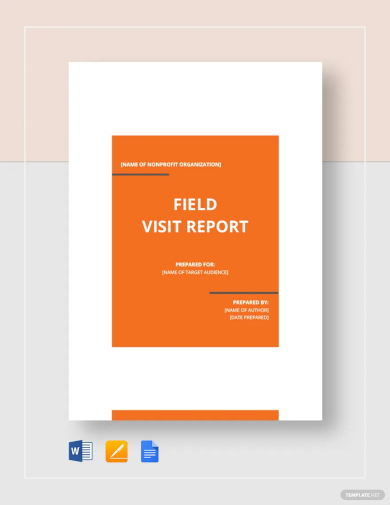
6. Student Field Report Sample PDF
7. Sample Field Work Report PDF
8. Example Of Field Report PDF
Importance of Field Report
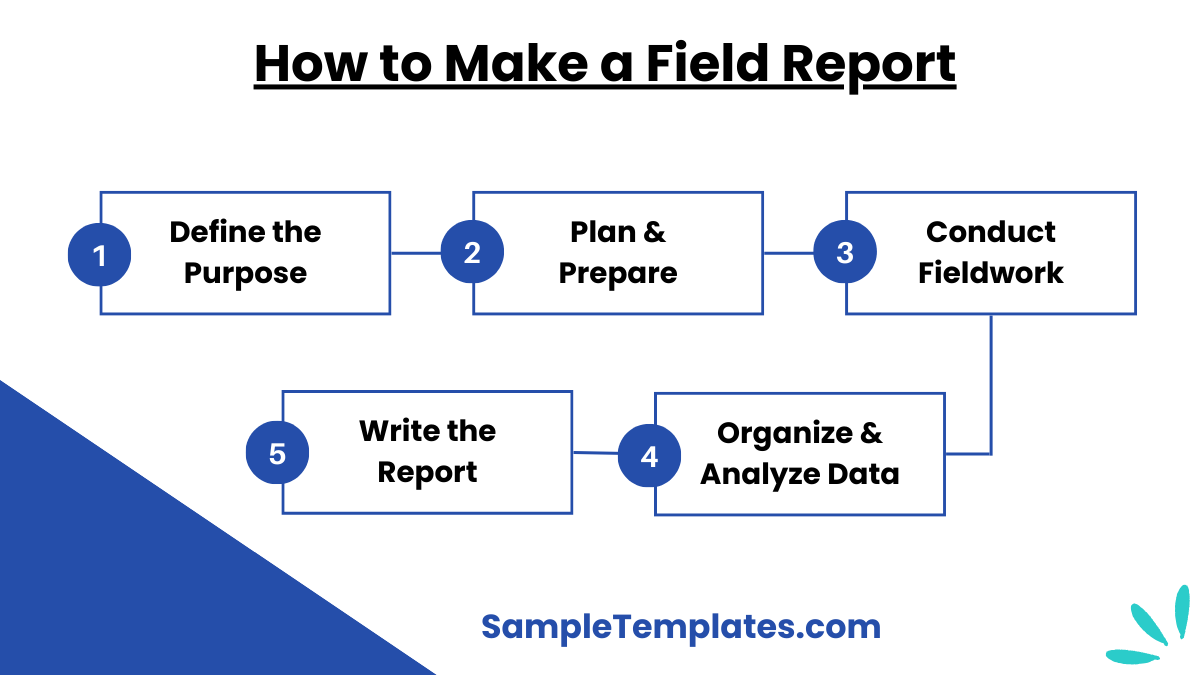
- Real-World Data Collection:
- Field reports provide firsthand data collected directly from the source, offering accurate and reliable information.
- Informed Decision-Making:
- They support decision-making processes by providing detailed insights and evidence from the field.
- Contextual Understanding:
- Field reports help in understanding the context and environment in which the data is collected, adding depth to the analysis. You can also see more on Business Visit Report.
- Problem Identification:
- They aid in identifying problems and issues on-site that may not be apparent through secondary data or desk research.
- Practical Application:
- Field reports are crucial for applying theoretical knowledge to real-world situations, bridging the gap between theory and practice.
- Documentation and Accountability:
- They serve as an official record of observations and findings, ensuring accountability and transparency in the research process.
- Enhanced Credibility:
- Reports that include field data are often more credible and persuasive due to the direct evidence they provide.
- Improvement and Development:
- Insights from field reports can lead to improvements and developments in practices, policies, and strategies based on real-world conditions. You can also see more on Visit Reports.
9. Field Report Example For Students
10. Sample Of Field Report PDF
11. Sample Of Field Report
12. Examples Of Field Report
Tips For Writing a Field Report
- Plan Ahead:
- Before going into the field, define your objectives and plan your data collection methods. Prepare all necessary tools and materials.
- Take Detailed Notes:
- Record observations meticulously, including dates, times, locations, and specific details. Use sketches, photographs, and audio recordings to supplement your notes.
- Be Objective:
- Maintain objectivity in your observations and avoid letting personal biases influence your findings. Report facts accurately and impartially. You can also see more on Management Daily Report.
- Structure Your Report:
- Organize your report with clear sections: introduction, methodology, findings, analysis, and conclusion. Use headings and subheadings for clarity.
- Describe Methods Clearly:
- Provide a detailed description of the methods and tools used for data collection. This ensures transparency and allows others to replicate your study if needed.
- Analyze Data Thoroughly:
- Analyze the collected data carefully, looking for patterns, trends, and insights. Use charts, graphs, and tables to present data visually.
- Use Clear and Concise Language:
- Write in a clear, concise, and straightforward manner. Avoid jargon and complex language that may confuse readers. You can also see more on Research Project Reports.
- Support Findings with Evidence:
- Back up your analysis and conclusions with concrete evidence from your observations. Include quotes, photographs, and specific examples.
- Review and Revise:
- Proofread your report for any errors or inconsistencies. Revise to improve clarity, coherence, and readability.
- Include Recommendations:
- Based on your findings, provide actionable recommendations or suggestions for future research or improvements.
13. Field Report PDF
14. Student Field Work Report Sample
15. Field Study Report PDF
16. Project Field Report
What Is a Field Report?
A field report is a written record of observations and analyses of certain occurrences, behaviors, processes, and so on. It is founded on theories and the analysis of researchers, which are utilized to create solutions for a given project or case study format. The goal of field reports is to describe an observed person, location, or event and then analyze that observation data to discover and classify common patterns in connection to the research problem statement motivating the study. The data is frequently in the form of notes recorded during the observation, but it can also be any kind of data collection, such as photographs, graphics, or audio recordings.
FAQ
How to Approach Writing a Field Report
Approach writing a field report by first defining your objectives and research questions. During fieldwork, take detailed notes, photographs, and records. Organize your data into categories. Analyze the data for patterns and trends. Structure the report with an introduction, methods, findings, and recommendations. Use proper formatting, citations, and seek feedback before submission.
What is a daily field report?
A daily field report is a document that summarizes activities, observations, and data collected during each day of fieldwork or research. It provides a chronological record of events and findings.
What is field report in one sentence?
A field report is a structured document that presents systematic observations, data, and findings collected during fieldwork, research, or investigative activities.
What qualities distinguish a field report?
Field reports are used to explain an observed sample event, person, or location, as well as to analyze the observed data to identify and categorize the themes related to the research questions described in the study.
What information should be included in a field report?
A field report should include information such as the theoretical foundation, study aim, and observations.
What is the significance of fieldwork in social work?
Students can learn how to use social work approaches in the context of particular people, groups, or communities’ problems through field work.
In conclusion, this field report provides a comprehensive overview of our observations and findings. It serves as a valuable tool for decision-making, future planning, and continuous improvement. I appreciate the collective effort in gathering this data, ensuring that our insights contribute meaningfully to the success of our project or initiative.
Related Posts
FREE 10+ Field Trip Proposal Samples in PDF MS Word | Apple ...
FREE 12+ Sample Testing Reports in PDF MS Word
FREE 10+ Medical Incident Report Samples [ Office, Device ...
FREE 10+ Conference Report Samples in MS Word Google Docs ...
FREE 10+ Scientific Research Report Samples in MS Word PDF
FREE 10+ Nursing Incident Report Samples in PDF DOC
FREE 10+ Research Analysis Report Samples in MS Word PDF
17+ Sample Visit Reports - PDF, Word, Apple Pages
FREE 14+ Sample Trip Reports in MS Word Apple Pages | Google ...
FREE 16+ Sample Marketing Reports in Google Docs MS Word ...
FREE 18+ Sample Trip Reports in MS Word Apple Pages | PDF
FREE 9+ Field Engineer Job Description Samples in PDF
FREE 34+ Sample Report Writing Format Templates in PDF
FREE 12+ Business Trip Report Samples in MS Word Pages ...
FREE 3+ Accomplishment Report for Nurses Samples in PDF DOC
